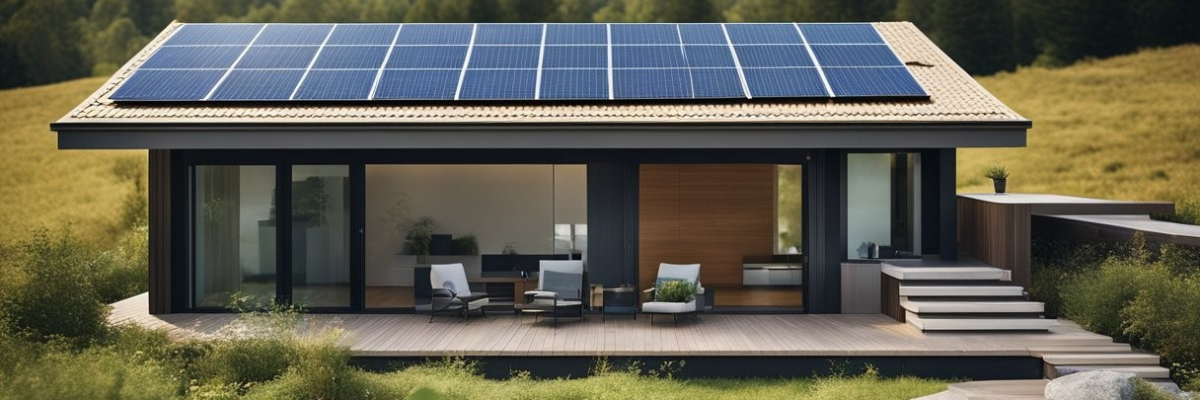Eco Building Materials and Their Impact on Urban Landscapes
Eco building materials, also known as sustainable or green building materials, are materials that have a minimal environmental impact throughout their life cycle—from production to disposal. These materials help reduce the carbon footprint of buildings, improve energy efficiency, and contribute to healthier indoor and outdoor environments. They play a key role in transforming urban landscapes by making cities more sustainable, resilient, and energy-efficient.
Key Characteristics of Eco Building Materials:
1.Low Embodied Energy:
- The energy required to produce, transport, and assemble the material is minimal compared to conventional materials like concrete or steel.
- Example: Bamboo and rammed earth have much lower embodied energy compared to traditional concrete.
2.Recyclability and Reusability:
- Materials that can be recycled or repurposed after their initial use reduce waste and environmental degradation.
- Example: Recycled steel, reclaimed wood, and recycled plastic can be used for construction.
3.Renewable and Natural:
- Materials sourced from renewable resources or abundant natural materials reduce dependency on non-renewable resources.
- Example: Timber from responsibly managed forests and fast-growing bamboo are renewable.
4.Energy Efficiency:
- Materials that improve the energy performance of buildings by offering insulation, heat retention, or passive cooling benefits.
- Example: Insulating materials like straw bale or recycled cotton reduce heating and cooling energy needs.
5.Minimal Toxicity:
- Materials that do not release harmful chemicals or volatile organic compounds (VOCs) during their life cycle, contributing to healthier indoor environments.
- Example: Low-VOC paints, non-toxic adhesives, and formaldehyde-free insulation.
6.Locally Sourced:
- Using materials available locally reduces transportation energy and supports local economies, thereby minimizing the carbon footprint.
- Example: Locally quarried stone or indigenous clay.
Examples of Eco Building Materials:
1.Bamboo:
- Characteristics: Fast-growing, renewable, strong, and versatile.
- Uses: Flooring, framing, scaffolding, and walls.
- Benefits: Reduces the need for deforestation and offers excellent tensile strength.
2.Recycled Steel:
- Characteristics: Strong, durable, and 100% recyclable.
- Uses: Structural frameworks, roofing, and reinforcements.
- Benefits: Reduces mining and processing of virgin steel, saving energy and reducing emissions.
3.Rammed Earth:
- Characteristics: Natural, durable, and provides good thermal mass.
- Uses: Walls and floors.
- Benefits: Excellent thermal regulation, reducing energy needed for heating and cooling.
4.Reclaimed Wood:
- Characteristics: Recycled wood from old buildings, barns, or factories.
- Uses: Flooring, paneling, furniture, and decorative elements.
- Benefits: Reduces deforestation and the energy required to process new wood.
5.Hempcrete:
- Characteristics: A bio-composite material made from hemp and lime.
- Uses: Walls and insulation.
- Benefits: Carbon-negative (absorbs more CO2 than it emits during its lifecycle), breathable, and lightweight.
6.Straw Bale:
- Characteristics: Renewable, excellent insulation, and biodegradable.
- Uses: Wall construction and insulation.
- Benefits: High thermal efficiency, reducing energy use for heating and cooling.
7.Fly Ash Concrete:
- Characteristics: A byproduct of coal combustion mixed with cement.
- Uses: Foundations, pavements, and structural components.
- Benefits: Reduces the need for traditional Portland cement, lowering greenhouse gas emissions.
8.Recycled Plastic:
- Characteristics: Plastic waste repurposed for construction.
- Uses: Insulation, roofing tiles, and composite materials.
- Benefits: Reduces landfill waste and lowers the demand for new plastic production.
9.Green Roof Systems:
- Characteristics: A layer of vegetation planted over a waterproofing membrane.
- Uses: Roofs of commercial and residential buildings.
- Benefits: Insulates the building, absorbs rainwater, reduces the urban heat island effect, and promotes biodiversity.
How Eco Building Materials Transform the Urban Landscape
1.Reduction in Urban Heat Islands:
- Traditional building materials like concrete and asphalt absorb and retain heat, leading to the urban heat island effect, where cities are significantly warmer than surrounding rural areas. Eco materials, such as green roofs and permeable materials, help cool urban environments.
- Impact: Eco materials help reduce cooling energy demands and mitigate climate change impacts in cities.
2.Energy Efficiency and Sustainability:
- Buildings constructed with eco materials are often more energy-efficient, reducing the need for heating, cooling, and artificial lighting. Natural insulation materials like straw bale or hempcrete create energy-efficient spaces.
- Impact: Energy-efficient buildings reduce overall energy consumption, leading to lower greenhouse gas emissions and operating costs.
3.Improved Air Quality:
- By using non-toxic materials that don’t emit harmful chemicals, eco buildings contribute to better indoor and outdoor air quality. Traditional materials often release pollutants like VOCs, but sustainable options help create healthier environments.
- Impact: Healthier indoor air quality leads to better occupant well-being and productivity, especially in dense urban settings.
4.Waste Reduction:
- The use of recycled and renewable materials reduces construction waste that would otherwise end up in landfills. Materials like recycled steel and reclaimed wood reduce the need for virgin materials and minimize waste generation.
- Impact: Reducing construction waste decreases the burden on landfill sites and helps manage urban waste more sustainably.
5.Promoting Circular Economy:
- Eco materials often fit into a circular economy model, where materials are reused, recycled, or repurposed rather than discarded. This reduces the need for raw materials and extends the lifecycle of construction products.
- Impact: Urban areas adopting circular principles will see reduced resource depletion and lower environmental impacts.
6.Resilience to Climate Change:
- Eco materials can enhance the resilience of urban buildings to extreme weather events. Materials like bamboo and rammed earth provide strong, flexible, and durable structures that can withstand natural disasters better than conventional materials.
- Impact: More resilient urban structures reduce the risk of damage from flooding, earthquakes, and storms, contributing to the long-term sustainability of cities.
7.Green Aesthetics and Urban Biodiversity:
- Incorporating green roofs, living walls, and natural materials contributes to a more aesthetically pleasing urban environment. These features also promote biodiversity by providing habitats for birds, insects, and plants within urban settings.
- Impact: Green spaces within cities improve residents’ quality of life, reduce stress, and encourage urban biodiversity.
8.Lower Carbon Footprint:
- The production of traditional building materials like concrete and steel emits large amounts of CO2. Eco materials, particularly those with low embodied energy or carbon-negative properties like hempcrete, significantly reduce the carbon footprint of construction projects.
- Impact: Widespread adoption of eco materials in urban construction can help cities meet climate targets, such as carbon neutrality or net-zero goals.
Conclusion
Eco building materials are at the forefront of transforming urban landscapes into more sustainable, energy-efficient, and environmentally friendly spaces. By incorporating these materials into construction practices, cities can reduce their environmental impact, improve energy efficiency, and enhance the quality of life for their inhabitants. Sustainable building practices, supported by eco materials, are essential for building greener, more resilient, and climate-friendly urban environments in the future.


Recent Comments